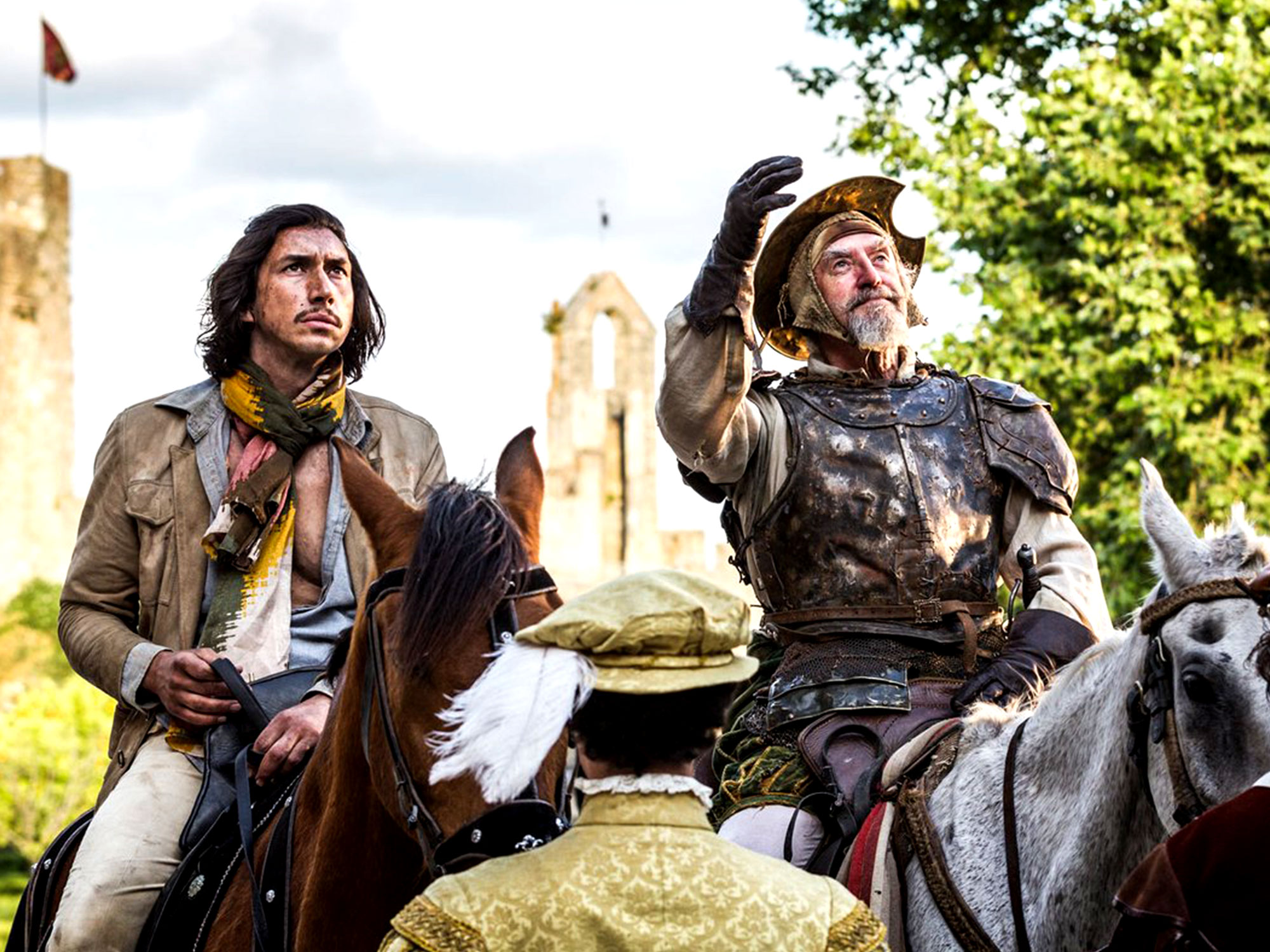
If the release of Terry Gilliam’s long delayed and much ballyhooed fantasy satire The Man Who Killed Don Quixote proves anything, it’s that not all long delayed, much ballyhooed passion projects need come to fruition. The fates tried to stop the director from making this film for nearly 30 years, throwing down a gauntlet of natural disasters, bad luck and budget shortfalls that eventually halted each attempt at production. Maybe Gilliam should have listened.
But the director persisted, and finally in June of 2017 his opus was in the can thanks to the participation of influential creative benefactors like Adam Driver. Despite such a long gestation period, the end result feels like it’s been created on the fly using a hodgepodge of meta-commentaries that strip Miguel de Cervantes’ original text of its true mania. Gilliam instead embraces one of the laziest forms of filmmaking; the hackneyed subpar Fellini homage.
In the opening scene, a pouty, entitled commercials director named Toby (Driver) admits that forcing his entire crew to relocate to Spain in order to shoot a more authentic advertising spin on Don Quixote might have been a bad idea. The firm’s overbearing Boss (Stellan Skarsgård) doesn’t much care though; there’s a Russian oligarch with a vodka company who needs wooing.
All seems lost until Toby happens upon a pirated DVD of his old student film, which was filmed in the same area nearly a decade before. Seeing images of the black-and-white art film about an ill-fated, mentally ill, self-described knight errant inspires this young man to stray from the corporate assignment and investigate the ghosts of his creative past.
The Man Who Killed Don Quixote makes certain that this journey into the abyss of memory and regret will be, well, quixotic. Upon entering the mountainside town he so fondly put to celluloid, Toby quickly discovers that his presence permanently altered the course of many lives, including the cobbler Javier (Jonathan Pryce) who now actually believes he’s the Man of la Mancha.
Gilliam’s ramshackle, uneven adventure narrative pushes Driver’s cocky Hollywood asshole through a strainer of amateur surrealism and political symbolism just to humble his ego. Jumping from one loosely connected confrontation to the next, Toby follows Javier down a black hole of rambling monologues and unthinking chest thumping, all in the name of chivalry.
What’s most surprising about The Man Who Killed Don Quixote is its lack of ambition. Gilliam has always been an envelope pusher with films like Time Bandits, Brazil and 12 Monkeys, but here he’s operating on autopilot. The bloated runtime and redundant nature of most dramatic scenes makes for a tiresome, exhausting experience.
The film culminates with an extended costume party sequence set inside a castle owned by Putin’s kindred spirit, a Russian fascist who just wants to watch the world squirm. Journeymen by trade, Toby and Javier appear sympathetic by comparison, but to what end? Gilliam pigeonholes them as conduits for a world (and artistic medium) that leads only toward madness, but the worthy kind. It’s such a limiting and strangely banal perspective for a filmmaker who for so long has been lauded for his limitless imagination.
The post The Man Who Killed Don Quixote appeared first on Little White Lies.
![Forest Essentials [CPV] WW](https://s3-us-west-2.amazonaws.com/pcw-uploads/logos/forest-essentials-promo-codes-coupons.png)
0 comments